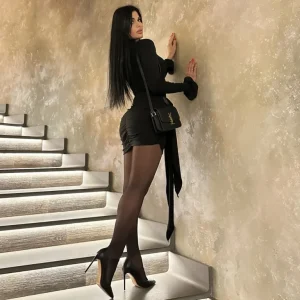Style has always been more than just clothing—it is a language, a form of self-expression that communicates who a person is without the need for words, and for women especially, appearance and style often serve as a reflection of personality, emotions, social standing, and even age. The way a woman dresses, the way she chooses her makeup, and the details she pays attention to in her outward image all combine to tell a story about her inner world, her preferences, and her outlook on life.

Coco Chanel once famously said, “Fashion passes, style remains,” and this timeless quote still rings true today because while fashion trends shift with every season, true style is about creating a consistent identity that reflects individuality, rather than simply chasing after what is currently in vogue. When a woman chooses a particular style, she is not just putting on clothes but carefully curating an image that represents the unity of her inner and outer self, and this is what makes style both powerful and deeply personal. Stylists often categorize women’s styles into several main types, each with its own unique characteristics, and among them is the classic style, which focuses on timeless pieces, neutral colors, and clean lines, conveying confidence, stability, and sophistication, perfect for women who prefer understated elegance that never goes out of fashion.
Business style, closely related to classic, emphasizes formality, structure, and professionalism, with tailored suits, blouses, and pencil skirts dominating the wardrobe, and this style is often chosen by women who want to project authority and competence in the workplace. The so-called “Chanel” style draws directly from the legendary designer’s influence, characterized by tweed jackets, simple silhouettes, and pearls, exuding refined femininity with a touch of tradition that has become synonymous with elegance.


The romantic style, on the other hand, is all about softness, femininity, and lightness, with flowing fabrics, pastel shades, lace, and delicate details, appealing to women who want to highlight their tenderness and gentle charm. Sporty style is the complete opposite, projecting energy, activity, and comfort, with sneakers, leggings, hoodies, and sporty accessories, often favored by women who lead active lives or who prefer a casual yet dynamic look. For those who enjoy breaking boundaries, the avant-garde style stands out as bold, experimental, and unconventional, with unusual cuts, asymmetry, and statement pieces designed to draw attention and challenge norms.
Folklore style draws inspiration from traditional and ethnic elements, often incorporating embroidery, natural fabrics, and patterns rooted in cultural history, making it perfect for women who want to highlight their connection to heritage or who simply enjoy earthy, natural aesthetics. Fantasy style is whimsical, imaginative, and often dramatic, featuring unique costumes, exaggerated silhouettes, and unusual accessories, chosen by those who want to create an almost theatrical impression through their appearance. There is also a diffuse style, which is eclectic and hard to categorize, blending elements from different styles into a unique personal mix that defies labels, reflecting a woman’s versatility and her refusal to be confined to one category.
Finally, there is glamour style, which is luxurious, eye-catching, and designed to impress, with sparkling fabrics, bold colors, and striking makeup, embodying confidence, charm, and allure. Each of these styles carries not only aesthetic value but also social and psychological significance, as the chosen style is often tied to how a woman wants to be perceived by the world. A woman who chooses classic may be seen as reliable and refined, while one who embraces avant-garde may be seen as daring and independent, and those who prefer romantic or folklore styles may radiate warmth and connection to tradition.
What matters most, however, is that each woman finds harmony between her external image and internal content, because true style is not about imitation but about authenticity. While trends continue to change, often influenced by celebrity culture, social media, and seasonal fashion shows, those who have a strong sense of personal style never lose their identity amid the chaos of changing fashion rules. They adapt, they experiment, but they always remain true to themselves, and that is what makes them stand out. Style is therefore not simply a matter of clothing—it is an extension of personality, a reflection of how one feels and how one wants to be seen, and in many ways, it is a lifelong journey of self-discovery expressed through fabrics, colors, and accessories.
For women, curating a style is not about impressing others but about achieving inner confidence, the feeling that their outward appearance resonates with their inner self. It is a delicate balance of embracing individuality while sometimes borrowing from tradition, of following fashion enough to stay current while ensuring that one’s unique identity is never lost. In the end, style is a woman’s personal signature, a living, evolving canvas that tells her story every single day, and while fashion will continue to change rapidly, true style will always endure, remaining the most authentic and powerful form of self-expression she can possess.





